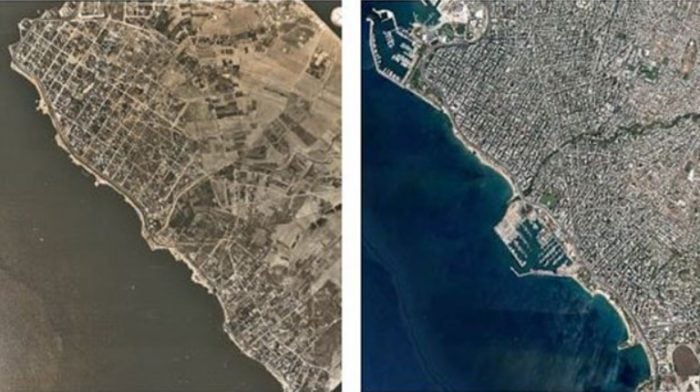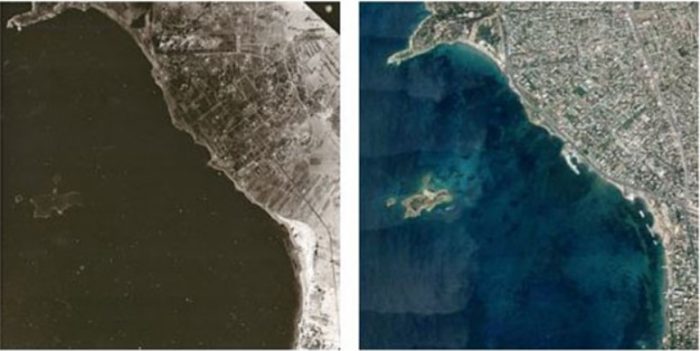A joint study conducted recently by the Hellenic Centre for Maritime Research and the Geology Department of the National and Kapodistrian University of Athens reveals the massive amount of new construction along the Athenian Riviera in the last 80 years.
The study, which involved the comparison of aerial pictures taken in 1938 to recent photographs, depicted the massive urbanization that this part of metropolitan Athens has experienced in less than a century.
Hundreds of thousands of new buildings were constructed along the Attica coast on the Saronic Gulf during these decades — and most of them are aesthetically unpleasant apartment blocks.
This almost-unimaginable pace of urban expansion, conducted primarily during the economic boom of the 1950s and 1960s, placed a massive ecological footprint in Attica, causing severe consequences for the ecosystems of the region.
Another shocking realization that came with this study is that while Attica is one of the oldest continually-inhabited places in the world, this last century is the very first time such an enormous number of people have ever lived in the area.
The study also noted that out of a total of 17.6 kilometers (11 miles) of coastline, 6.01 kilometers (3.8 miles), which represents one-third of the total, is off limits to citizens due to urban constructions.
An area comprising 4.8 kilometers, or 27.2 percent of the total, is covered by marinas and five percent (880 meters, or .5 mile) is only accessible after paying a fee.
The remainder of the coastline, comprising just 5.91 kilometers (3.6 miles), is accessible to citizens without having to pay anything at all.
Christos Anagnostou and his research team noted in their remarks that “This one-dimensional development of Attica’s coastal front, which has been implemented for the last 80 years, has to change drastically.
The researchers added that they believe that “Alternative policies are needed to support coastal resources and nature conservation” along this most urban stretch of the Greek coastline.
See all the latest news from Greece and the world at Greekreporter.com. Contact our newsroom to report an update or send your story, photos and videos. Follow GR on Google News and subscribe here to our daily email!







